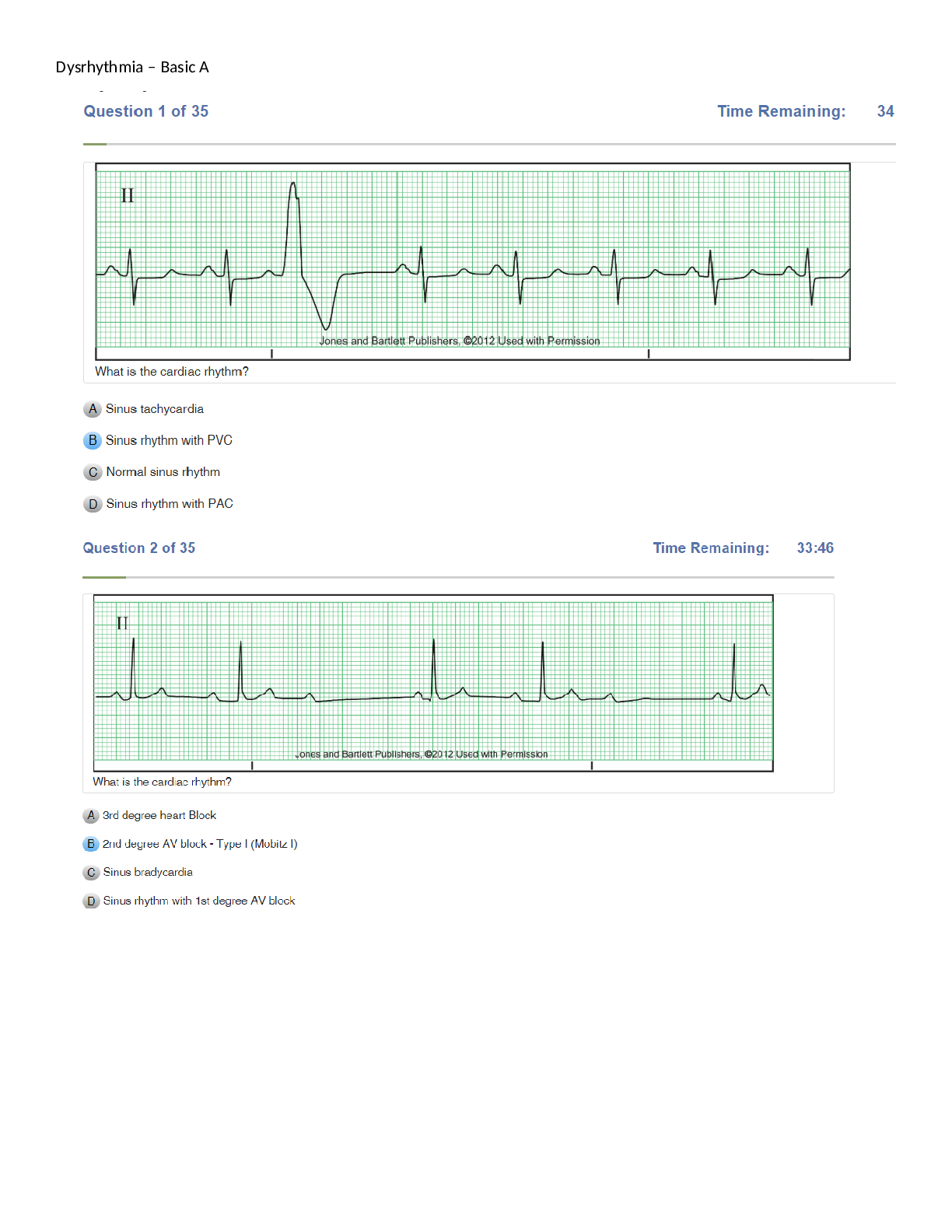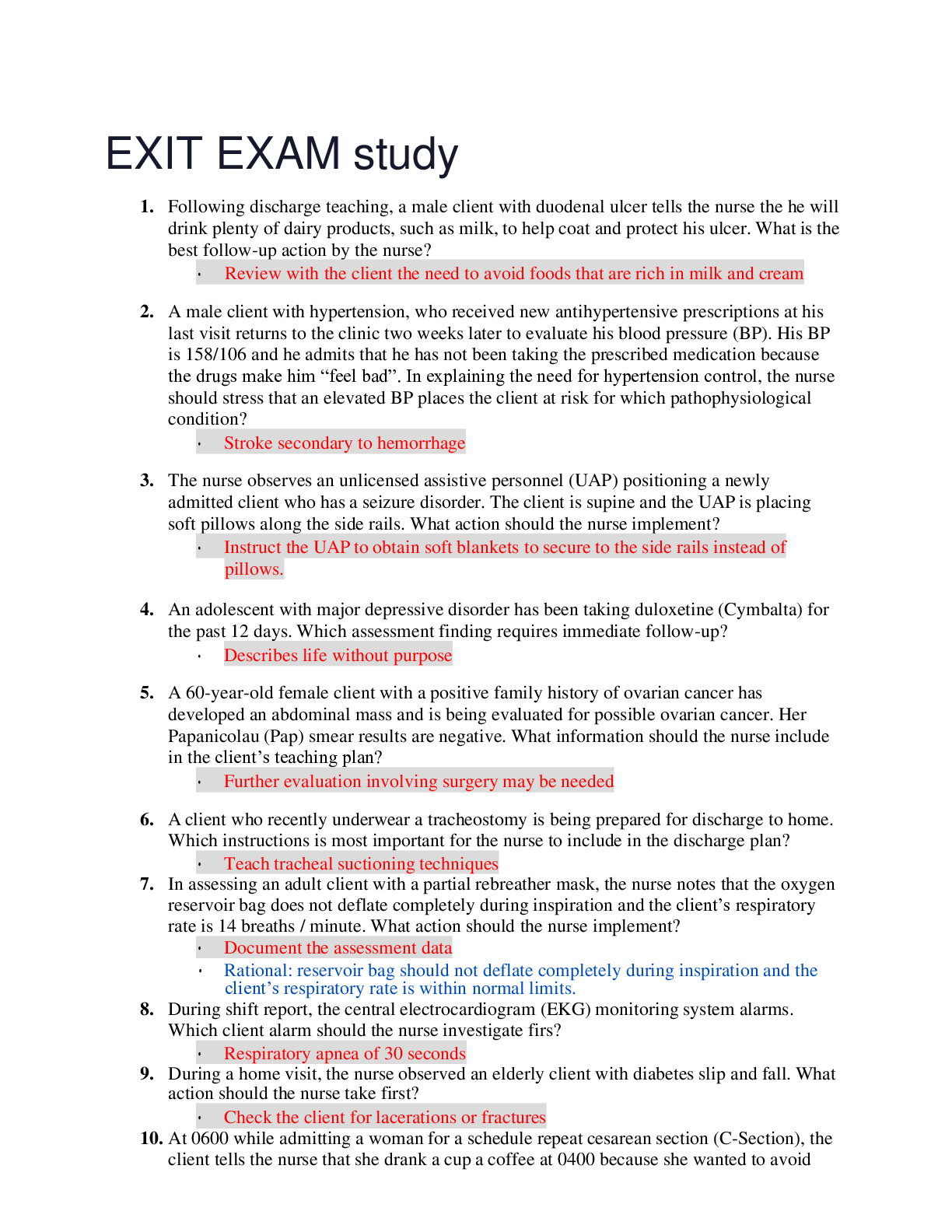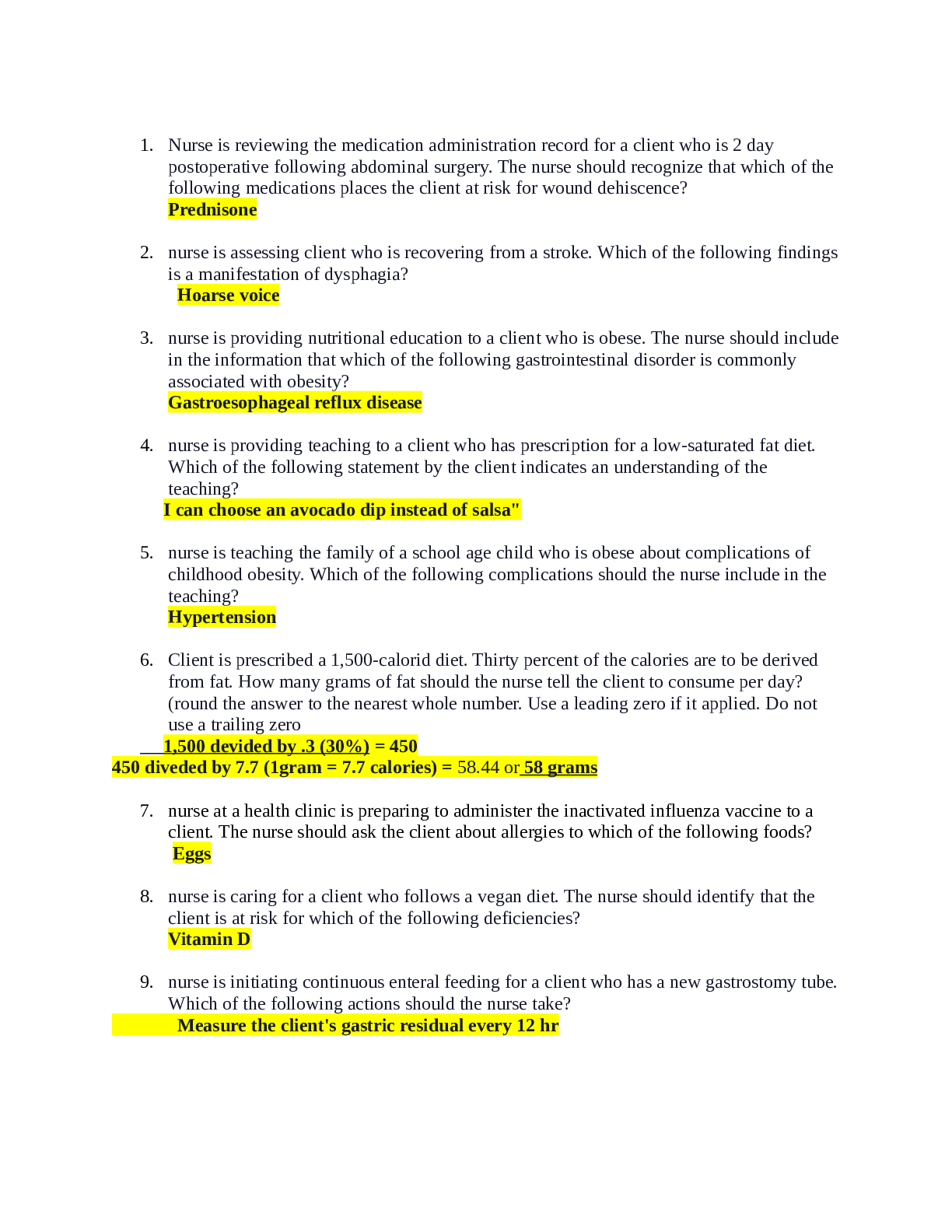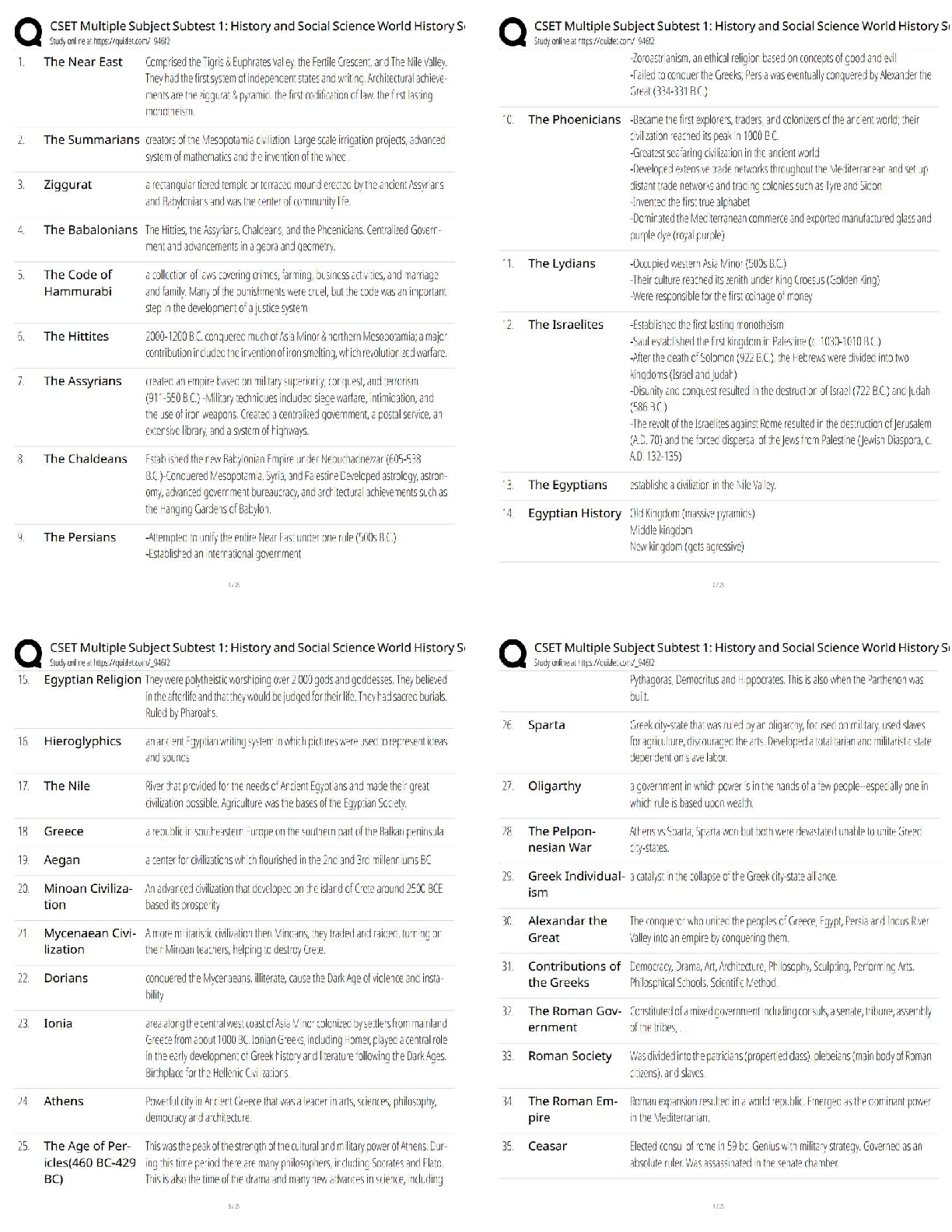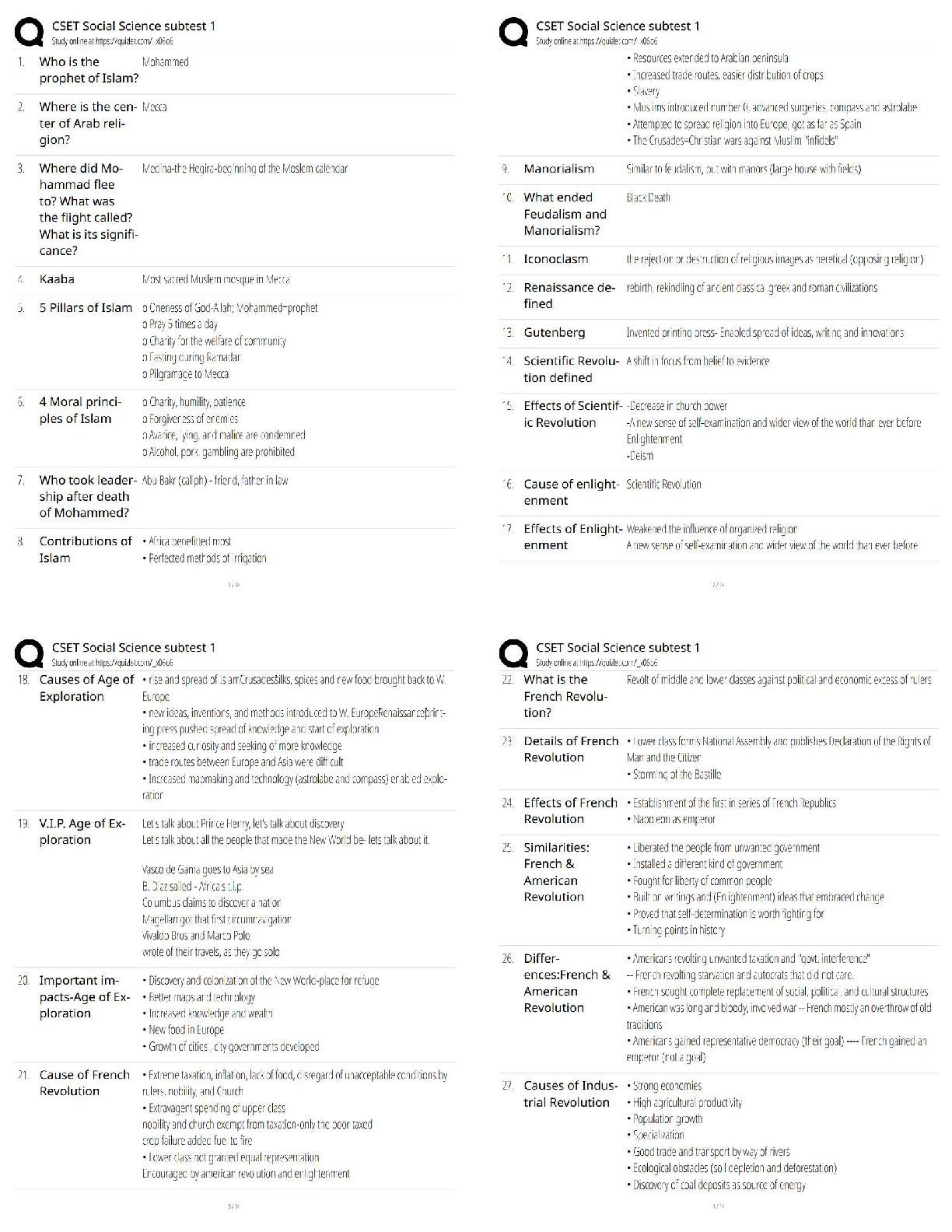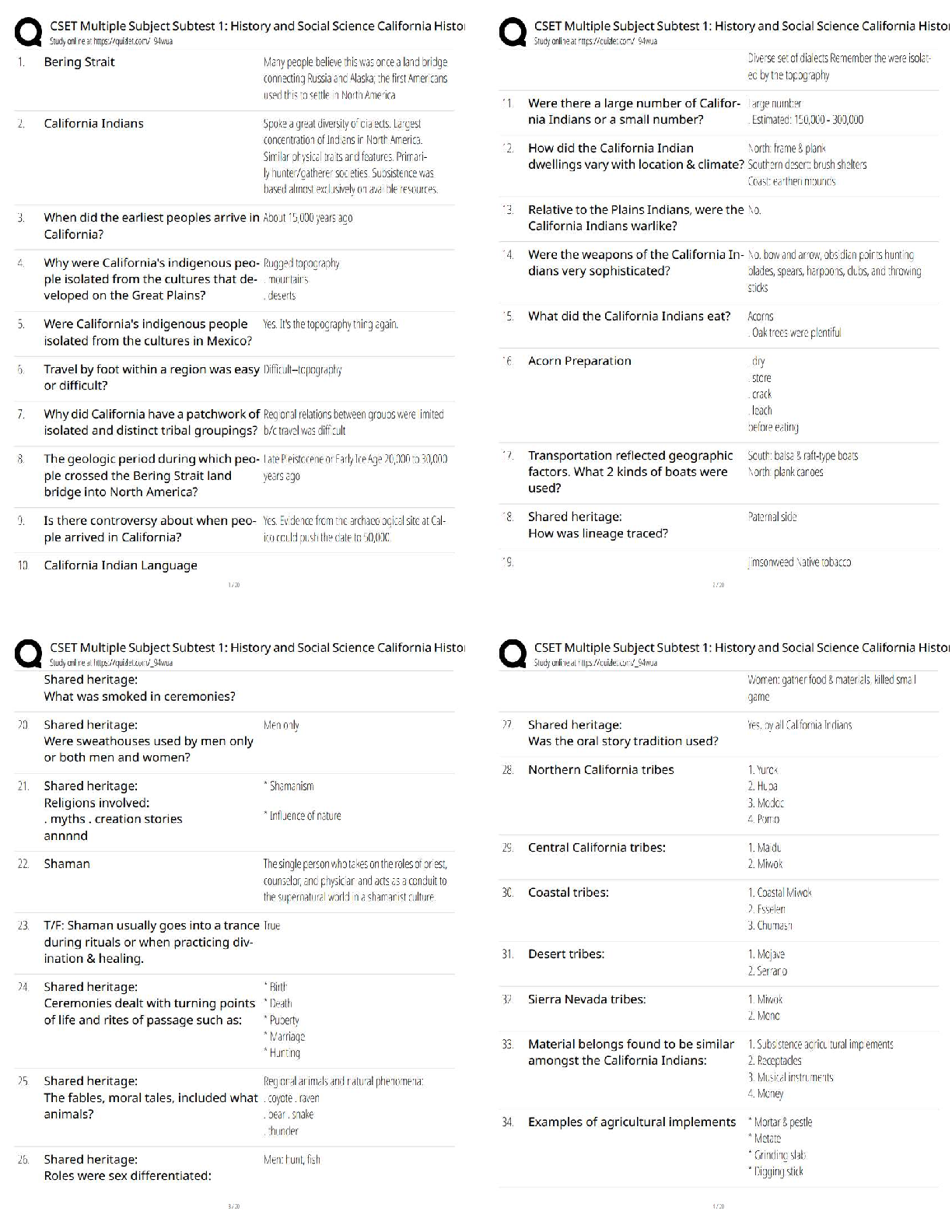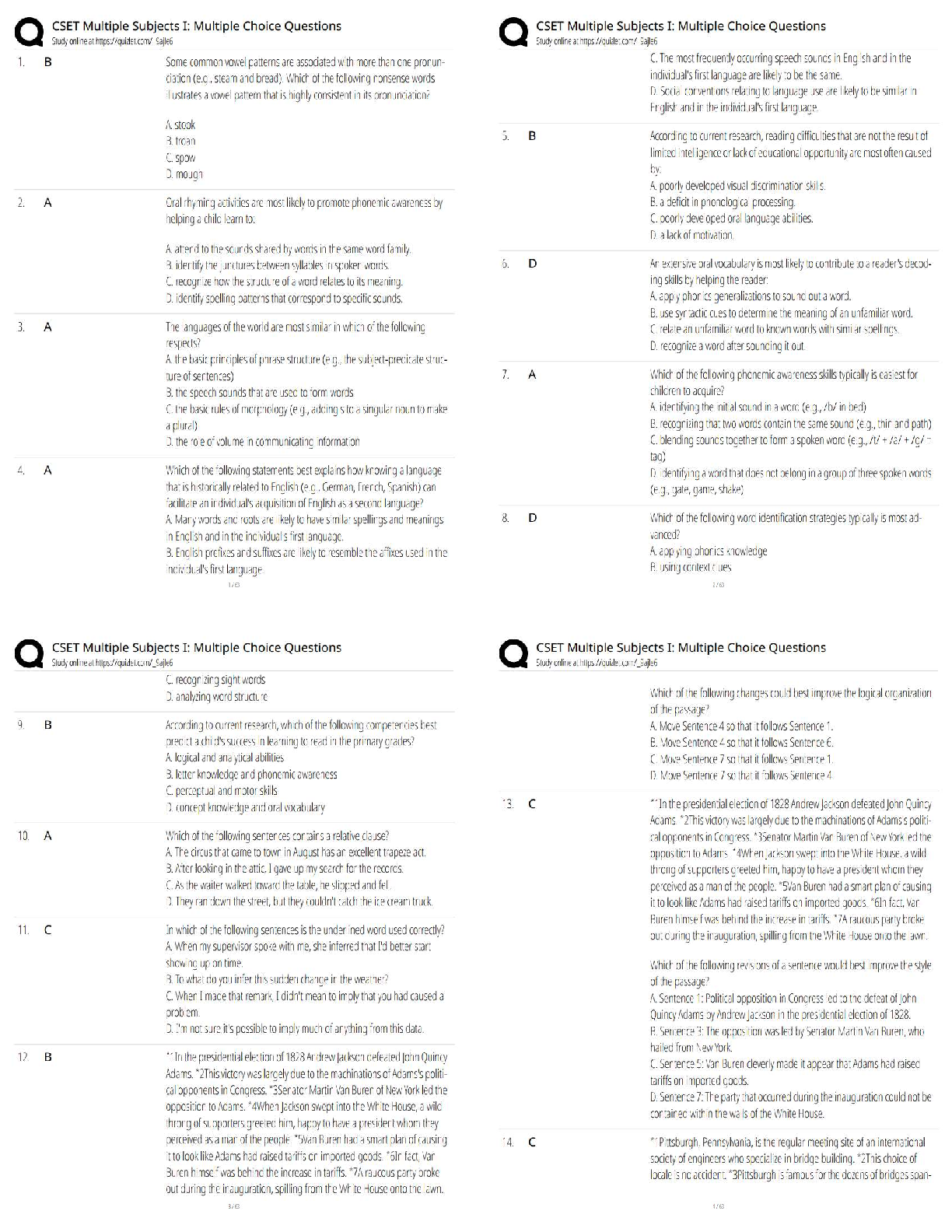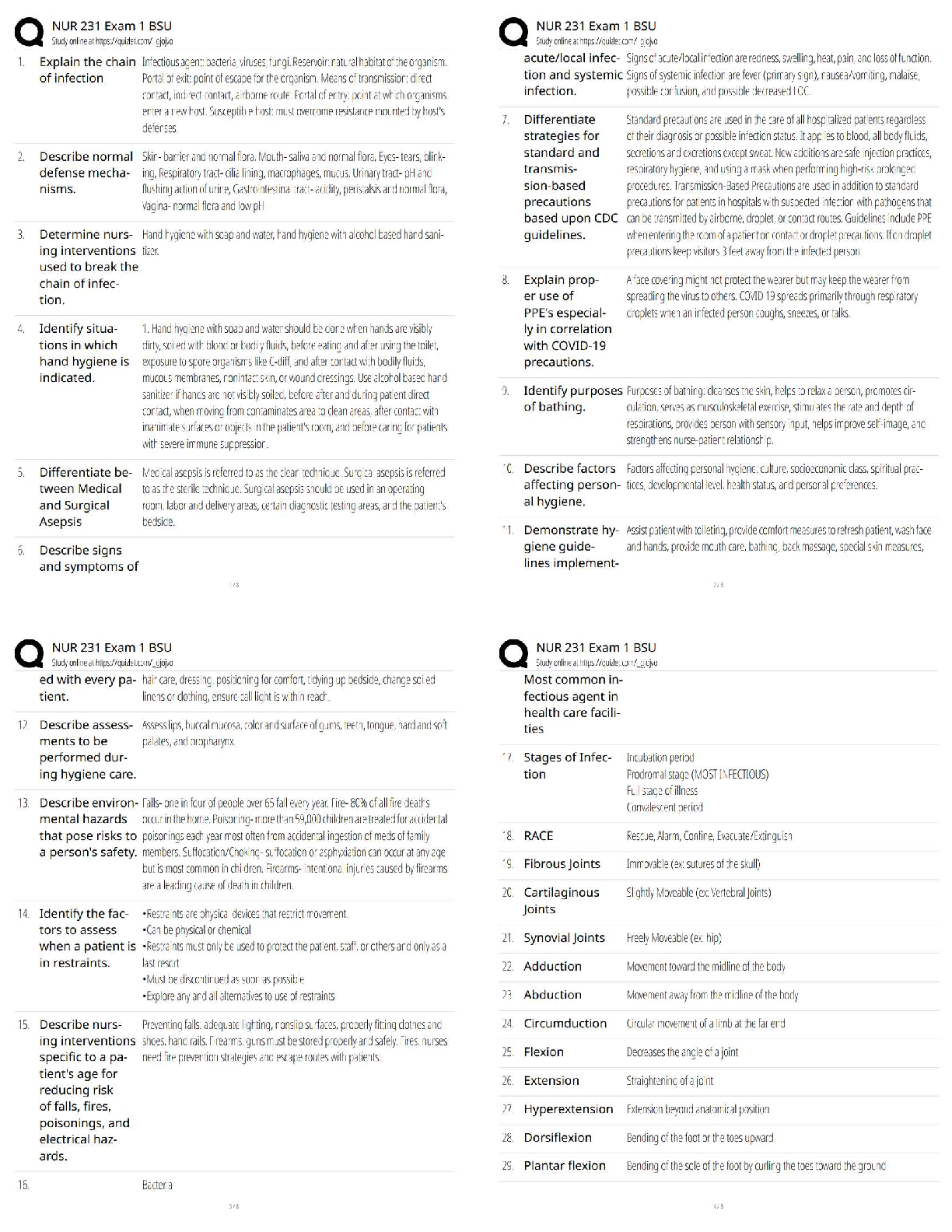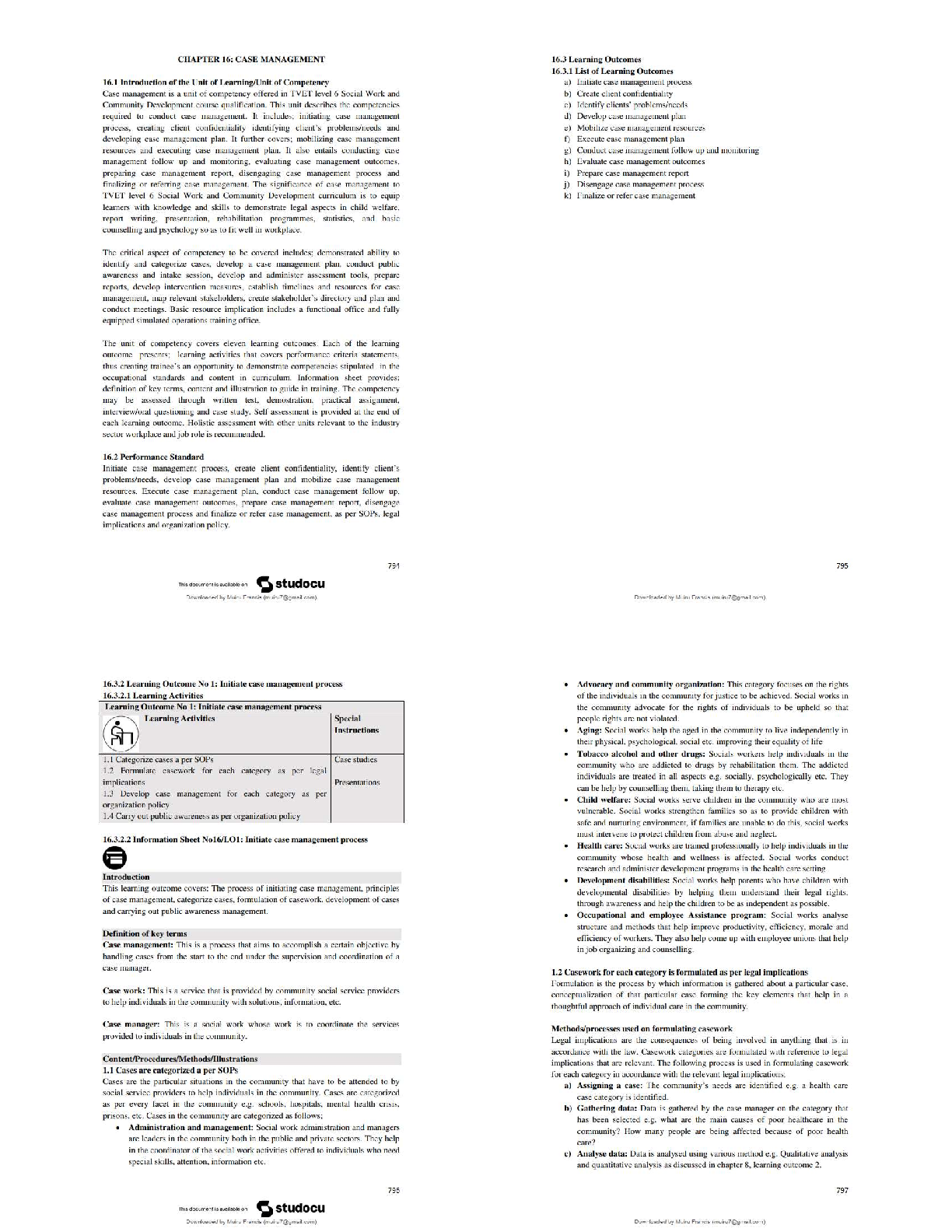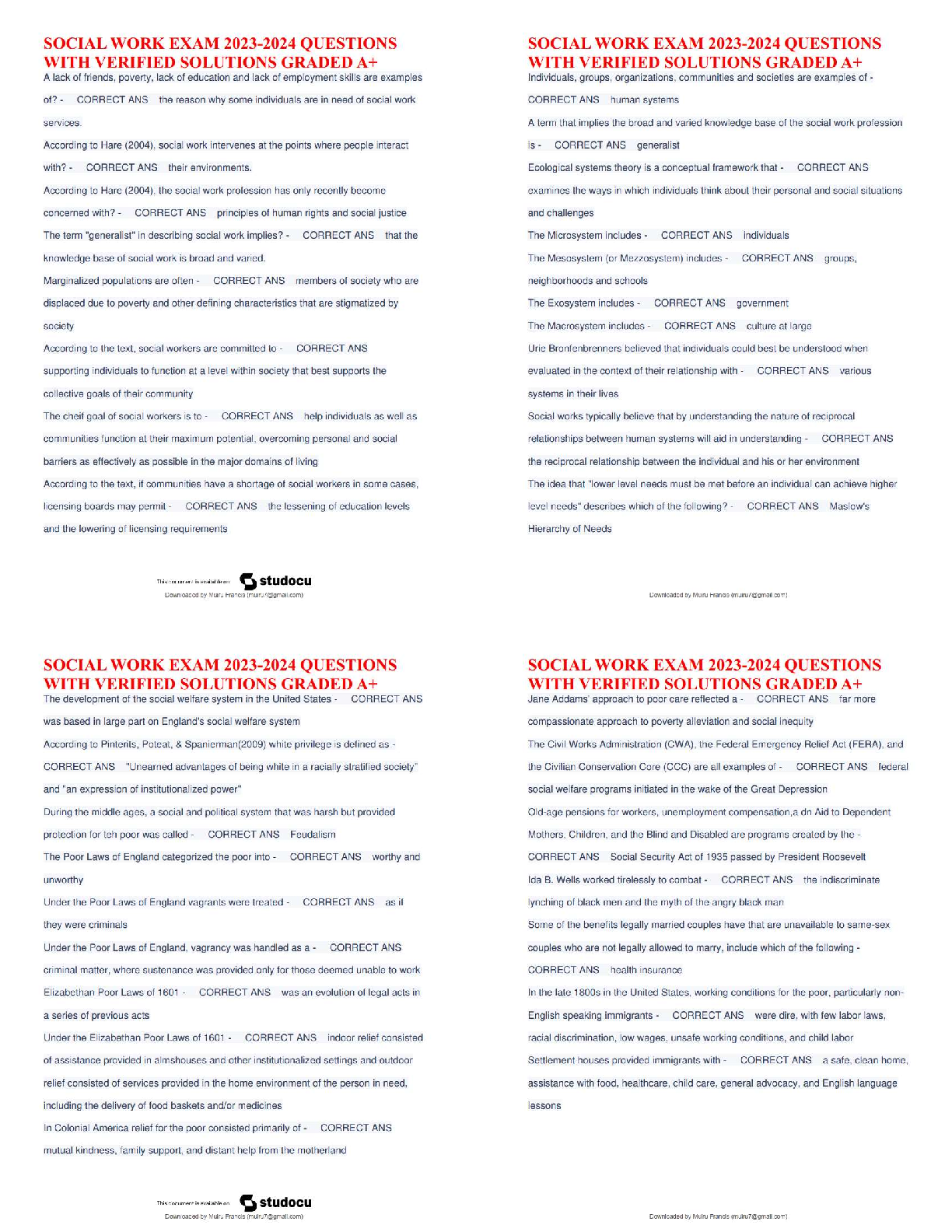Philosophy > QUESTIONS & ANSWERS > SOPHIA PATHWAYS Approaches to Studying Religions Milestone 2 (All)
SOPHIA PATHWAYS Approaches to Studying Religions Milestone 2
Document Content and Description Below
SOPHIA PATHWAYS Approaches to Studying Religions Milestone 2 1 Which of the following is an example of a non-theistic religion? • Buddhism • Islam • Hinduism • Christianity CONCEPT Non-Theism ... 2 Which of the following most closely defines the Tao? • While the Tao is understood as indefinable, a good approximation of its meaning is a heavenly place. • The Tao is defined best as a great spirit that unites all humans. • Although the Tao is considered to be eternally nameless, it is best described as the way or the path. • The Tao is a manifestation of God, which takes many different forms. CONCEPT Taoism - The Tao 3 The Tetragrammaton "YHWH" means: • "King." • "Ground of Life." • "I am that I am." • "Lord." CONCEPT Judaism- Yahweh 4 Which of the following best describes the relationship between revelations and religious narratives? • Revelations and religious narratives refer to the exact same phenomena. • Individuals always come to know religious narratives through revelation. • Revelations are one possible form of religious narrative, often thought to be the most compelling. • Revelations are the most common, almost mundane, form of religious narrative. CONCEPT Revelations 5 Which of the following choices is a common element or purpose of creation stories, as outlined in this pathway? • To explain who will be rewarded in the afterlife • To answer the question, “Where did I come from?” • To provide information on proper moral conduct • To explain why God exists CONCEPT Early Creation Stories 6 Although problematic questions of human existence have doctrinal or philosophical answers, they are also: • addressed by practices in many traditions. • ultimately unsuccessful in the eyes of most practitioners. • the sole topic that religious myths are concerned with. • not a concern for the average practitioner. CONCEPT Overview of "The Problem" 7 What does the concept "Summum bonum" describe? • An ethical goal unattainable by humanity. • The innate goodness of the human soul. • The ultimate end which humans ought to pursue. • The greatest possible being, or God. CONCEPT Summum Bonum 8 In most forms of Islam, what is Allah's relationship to the physical universe? • Allah sustains the physical universe, which has always existed. • The physical universe is part of Allah's "body" (or substance). • Allah will eventually end the physical universe, which has eternally existed. • Allah created the physical universe. CONCEPT Islam- Allah 9 What is the practice of evangelism? • The act of worshipping publicly. • The attempt to return a religion to its original, usually conservative, form. • The act of giving religious doctrines purely for the sake of education, not persuasion. • The attempt to persuade non-believers to join one's religion. CONCEPT Transmission of the Teaching 10 Which of the following best describes the term "ritual?" • A collective action directed solely at material ends, e.g. hunting for food • A sacred action repeated in a similar way over time • A spontaneous new action directed at the divine • Any practice that exists outside of accepted religious or social convention CONCEPT Action 11 What is the term "mysticism" most associated with? • An experience of direct contact with the divine. • A set of rational arguments about the divine. • Travel to a site associated with a special religious figure. • Giving up pleasure in pursuit of God. CONCEPT Mysticism 12 Isaac Newton is associated with a form of deism that views God as having made the laws of the universe and then let it run its course, or as a: • "Big Bang." • "Divine Watchmaker." • "Higgs Boson." • "Universal Architect." CONCEPT Theism vs. Deism 13 The Jewish conception of God is monotheistic, despite the fact that: • the cosmos is part of God. • many lesser gods exist. • God manifests in many different beings. • God is called by different names. CONCEPT Monotheism 14 Which of the following is the meaning of the Sanskrit word "dukkha?" • Compassion • Merit • Suffering • Sin CONCEPT Suffering 15 Which of the following is the correct definition of pantheism? • The idea that each religion should define God for itself • The belief that nature is identical with divinity • A variety of nature-based deities • The belief that there are many gods and goddesses CONCEPT The Transcendent in Primal Religions 16 The term "animism" originates from the Latin "anima," meaning: • animated. • soul. • reverence. • movement. CONCEPT Animism and Related Beliefs 17 What is the goal of Taoist practice? • To achieve nirvana. • To live life in accordance with God's law. • To become one with the Tao. • To worship Lao Tzu. CONCEPT Taoism - The Tao 18 According to Christian theology, which member of the Trinity was the first to exist? • The Holy Spirit • The Father • It is impossible for humans to know • None, all members of the Trinity are eternal CONCEPT Christianity- Trinity 19 What is the defining feature of a secular narrative, as opposed to a religious narrative? • Its purported authorship is a prophet, rather than God. • Its origins at some point in human history are known. • There is a lack of distinction between "legal" and "religious" ethics. • It centers on worldly, rather than spiritual, content. CONCEPT The Nature of Religious Narratives 20 Zazen is an act of ritual meditation in which tradition? • Jainism • Hinduism • Zen Buddhism • Daosim CONCEPT Silence 21 What is atheism? • The admission that one does not know if there is a God or not. • The belief that all religions are (in essence) correct. • The belief that the material world is infused with the divine. • The belief that there is no God. CONCEPT Atheism 22 In the Confucian tradition, why is evil problematic? • It corrupts the soul. • It causes one to be unsuccessful. • It causes an individual to go to hell if committed. • It destroys a well-ordered society. CONCEPT Evil 23 In Buddhism, the liberation from suffering and the end of the cycle of rebirth is known as: • nirvana. • death. • the doctrine of no-self. • the Middle Way. CONCEPT Death 24 According to the Advaita Vedanta school of Hindu philosophy, how do followers find liberation? • By strict obedience to the behavioral prescriptions found in the Ramayana • By recognizing the identity of the self (Atman) and the whole (Brahman) • By making offerings to the gods and goddesses • Through honoring the Great Spirit CONCEPT Hinduism - Brahman/Atman 25 Which of the following is among the seven sacraments recognized by the Catholic Church and other Christian denominations? • Celebrating Christmas • Baptism • Attending church • Honoring saints CONCEPT Sacramentalism [Show More]
Last updated: 3 years ago
Preview 1 out of 10 pages
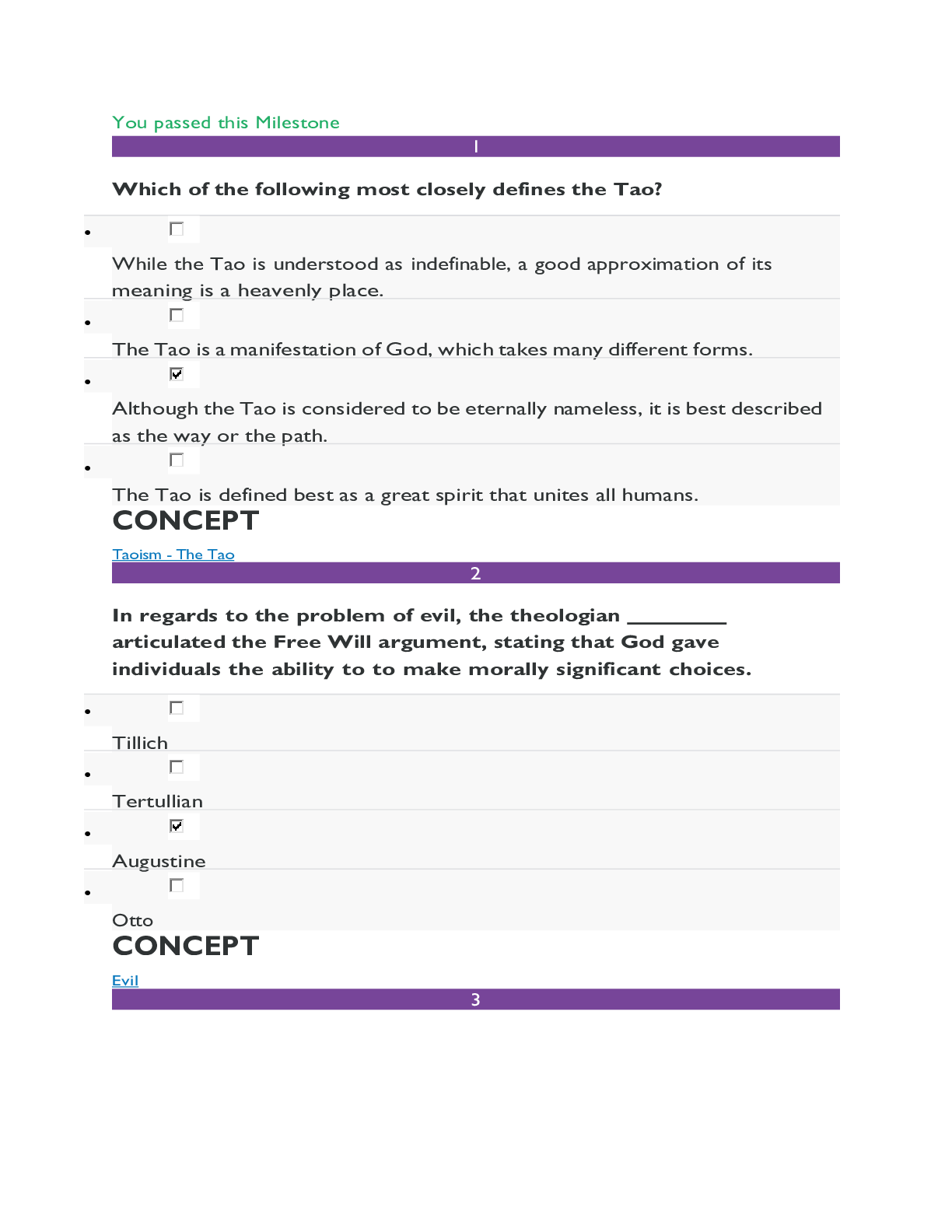
Buy this document to get the full access instantly
Instant Download Access after purchase
Buy NowInstant download
We Accept:

Reviews( 0 )
$13.00
Can't find what you want? Try our AI powered Search
Document information
Connected school, study & course
About the document
Uploaded On
Mar 20, 2021
Number of pages
10
Written in
All
Additional information
This document has been written for:
Uploaded
Mar 20, 2021
Downloads
0
Views
76

